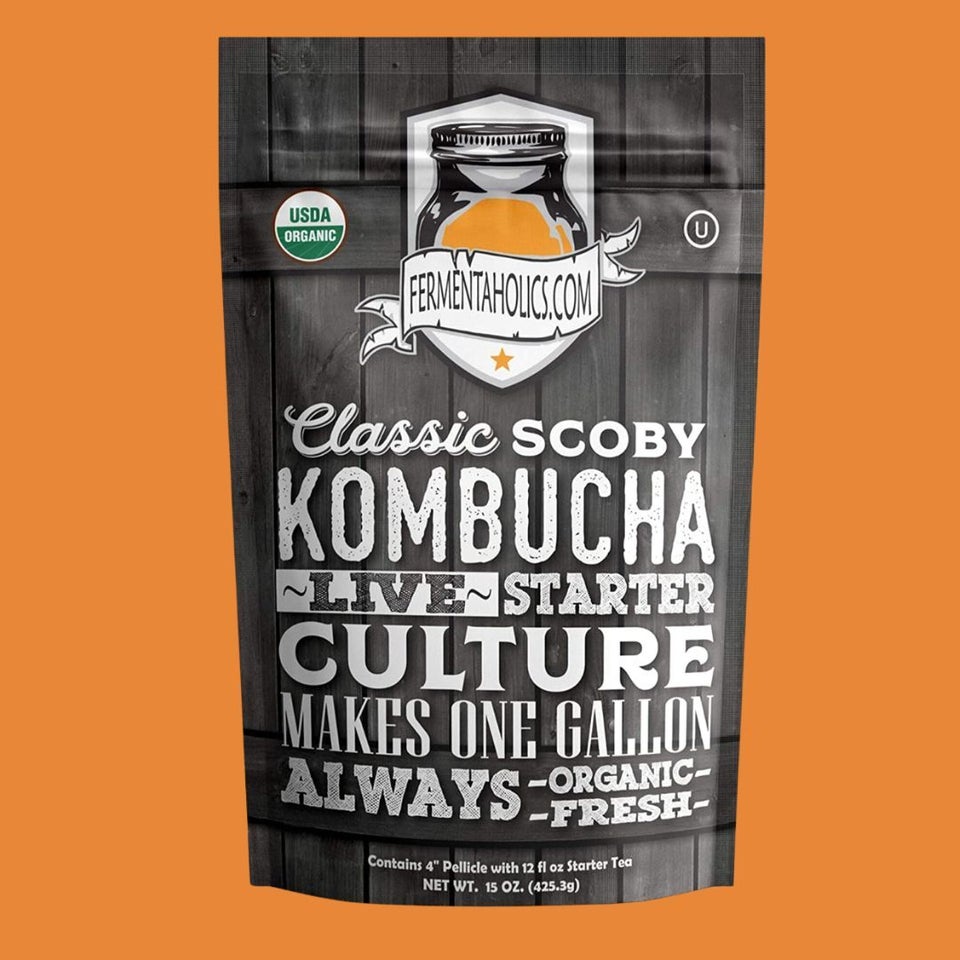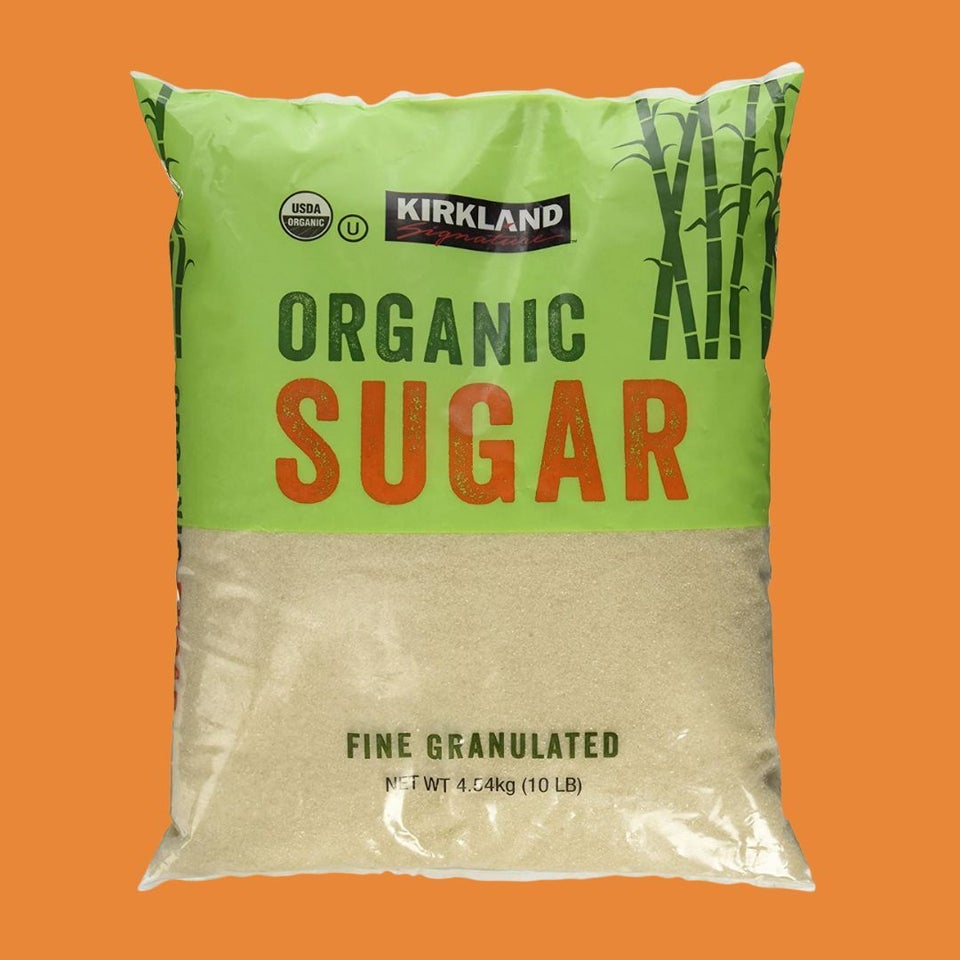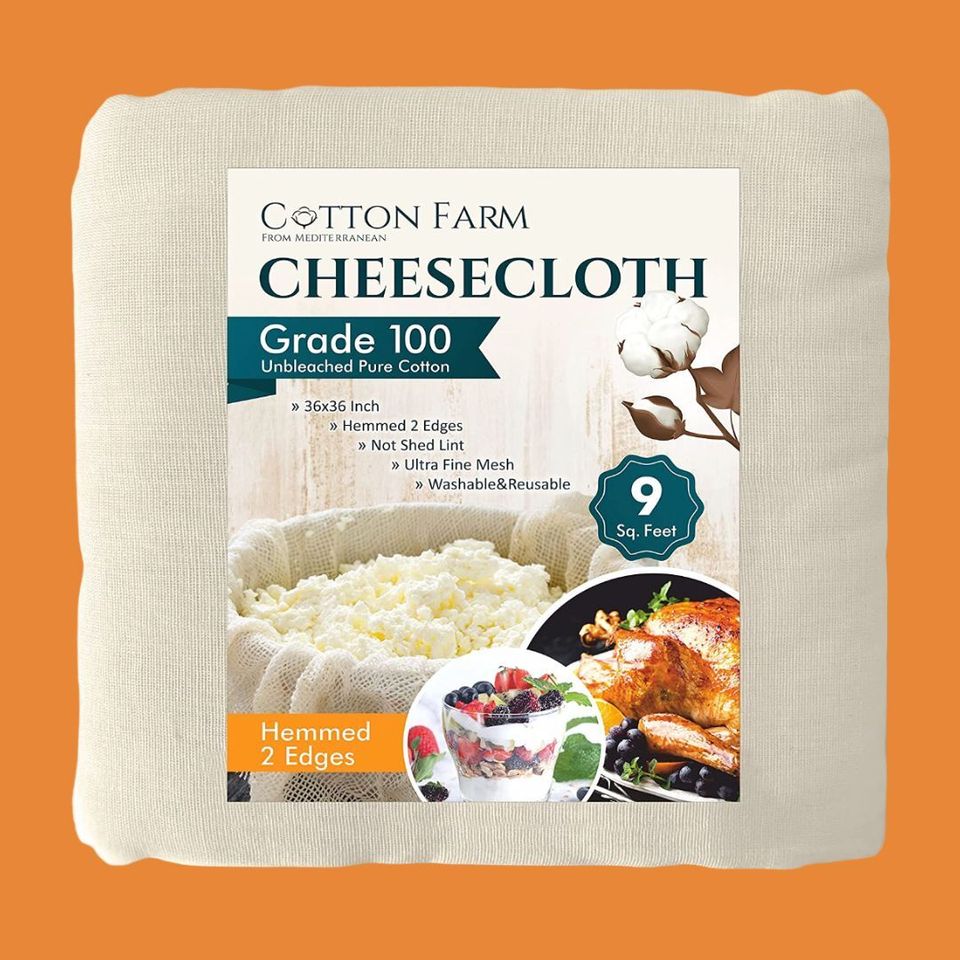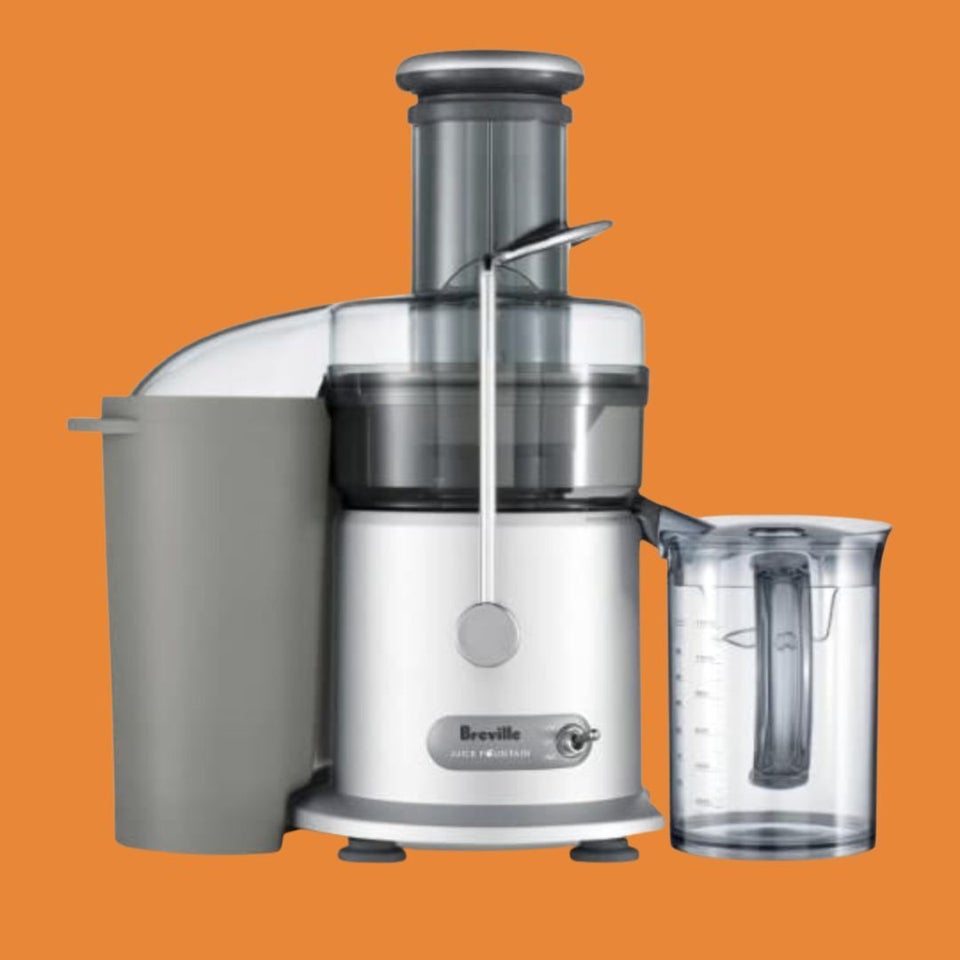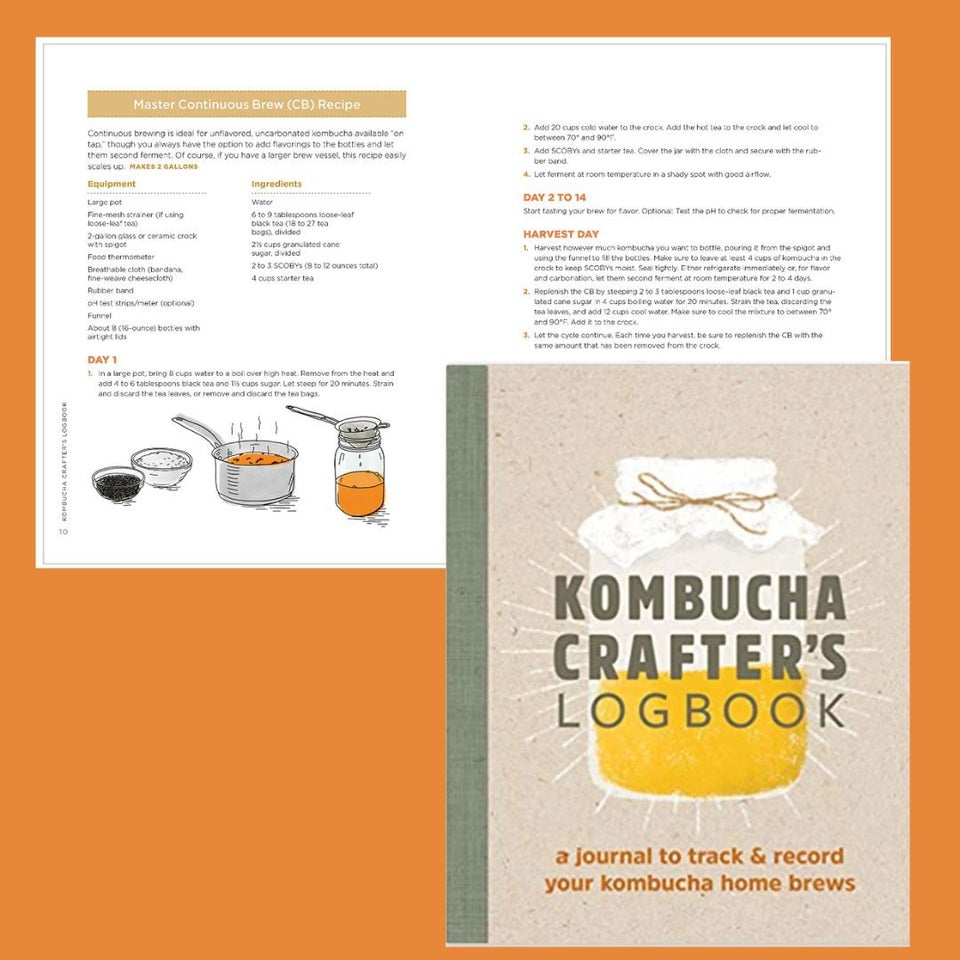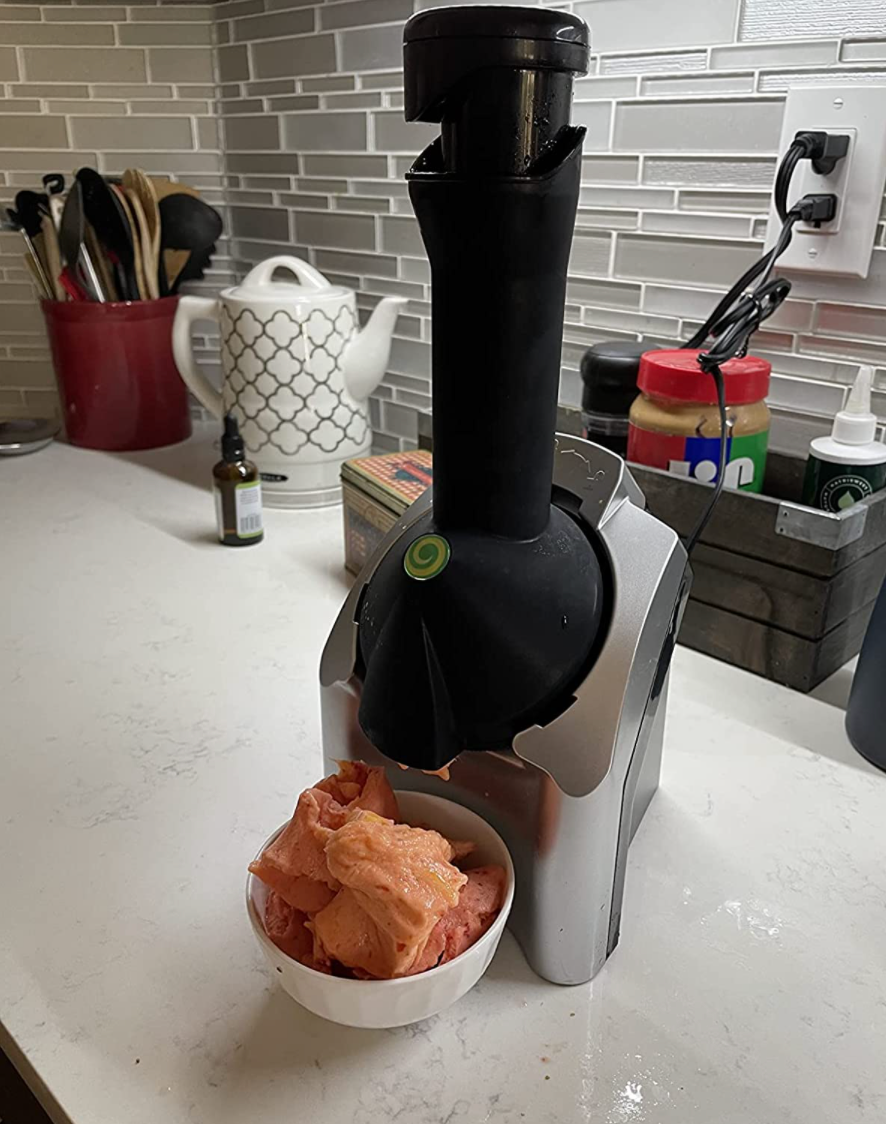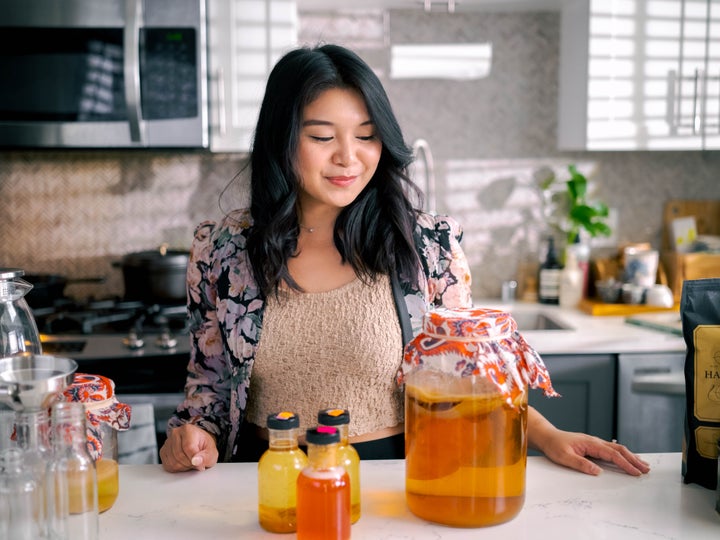
Angelica Kelly

Angelica Kelly
1
Kelly's favorite live culture starter to make SCOBY
"It’s really important to get your SCOBY from a quality source. If you’re looking for delicious kombucha that’s resilient to mold, carbonates well and plays well with flavorings, you need a strong culture," Kelly told HuffPost. "My favorite source [for SCOBY] is Fermentaholics — I’ve purchased and tested their cultures repeatedly, and their products are consistently great quality."
This USDA-certified organic culture starter makes one gallon of kombucha and includes one SCOBY that was propagated in a lab-controlled environment to create the best fermentation possible.
This USDA-certified organic culture starter makes one gallon of kombucha and includes one SCOBY that was propagated in a lab-controlled environment to create the best fermentation possible.
2
One pound of organic loose leaf "real" black tea
"Using pure tea (English Breakfast or Assam are my favorites for kombucha brewing) is your best bet," Kelly told HuffPost. "I generally don’t recommend using herbal 'teas' because the kombucha culture doesn’t always process those well and it could set you up for a moldy brew." She said that "herbal" teas aren’t really tea because they don't come from the camellia sinensis plant.
This English Breakfast tea option favored by Kelly has a classic smooth and hearty flavor that you can expect from a black tea.
This English Breakfast tea option favored by Kelly has a classic smooth and hearty flavor that you can expect from a black tea.
3
A 10-pound bag of organic cane sugar
Sugar is what your SCOBY feeds on and, according to Kelly, the best kind of sugar leads to a brew that is the healthiest and most consistent. Although there are a few sugars you can choose from, such as table sugar or raw, she prefers the Kirkland brand's organic fine granulated cane sugar, which you can get in this cost-effective 10-pound bag.
Advertisement
4
A four-pack of 1-gallon glass jars great for fermentation
Wide-mouth glass jars will be essential for housing your SCOBY, and Kelly said that purchasing this pack of four can be more economical than buying them individually. They are also made of food-grade glass that won't absorb flavors from past contents or leach anything harmful into your brew.
5
A fine-weave unbleached 100% cotton cheesecloth
Because kombucha needs airflow to ferment, you won't be using the metal lids that come with your jars. Instead, you'll need a fine-weave piece of cloth that will protect your brew from dust or fruit flies while also allowing it to breathe. You can secure this cheesecloth to the tops of your jars using thick rubber bands.
6
A three-piece funnel set with a strainer
"I like these because the pack comes with a little strainer you can use if you want to strain fruit pulp after you finish second fermenting in the bottle," Kelly said of this heat-resistant funnel set made with BPA-free plastic and non-slip ridges to keep things secure while pouring.
Advertisement
7
A five-pack of stick on temperature strips
Kelly explained that temperature plays a key role in carrying out the fermentation process and these stick on temperature strips are a great way to measure the average room temperature in order to make any necessary environmental adjustments. Just peel and stick these strips to the outside of your jars.
8
A set of six glass bottles with high-pressure gasket caps
Once your kombucha has gone through its first fermentation process in the jar, you will need to ferment it a second time in an airtight bottle. This is the point at which you can add any flavorings. "You want good-quality, food-grade glass that’s thick enough to handle high-pressure contents. And equally important is the cap. You want a cap that can be secured tightly enough to make an airtight seal," Kelly said. "This is what will allow you to trap the carbonation into the liquid as your brew ferments in the bottle."
These BPA-free glass bottles, which are Kelly's bottles of choice, use lids with high-pressure gaskets and stainless steel closures, creating a secure, airtight seal.
These BPA-free glass bottles, which are Kelly's bottles of choice, use lids with high-pressure gaskets and stainless steel closures, creating a secure, airtight seal.
9
A stainless steel French press with three-layer filter
Kelly uses this stainless steel French press to both steep and filter her loose-leaf tea in one easy step. This insulated press comes with two additional screens for even finer straining and each component is dishwasher-safe for easy cleanup. If you don't want to purchase a French press, Kelly said that using a regular kettle and straining the leaves out afterwards works great, too.
Advertisement
10
A highly rated juicer
Although a juice extractor would be considered an item reserved for more advanced kombucha making, Kelly said that having one on hand can be great for crafting larger batches of kombucha and for juicing more fibrous fruit, like pineapple. She added that she prefers to flavor her brews with these fresh juices over pre-made purees, although you could also use a blender to get similar results with some adequate straining.
This particular machine by Breville, which Kelly recommends, uses a unique extraction system to create optimal juice content filled with nutrients, instead of unusable froth.
This particular machine by Breville, which Kelly recommends, uses a unique extraction system to create optimal juice content filled with nutrients, instead of unusable froth.
11
Kelly's very own step-by-step logbook containing recipes and tips
Kelly authored the "Kombucha Crafter's Logbook" as a way for home kombucha makers to keep track of what parts of their process helped to make their best batch. Additionally, this customized tracker, which is modeled after Kelly's own journals and logbooks, contains master recipes, tips and reference charts to help take the guesswork out of the brewing process.
